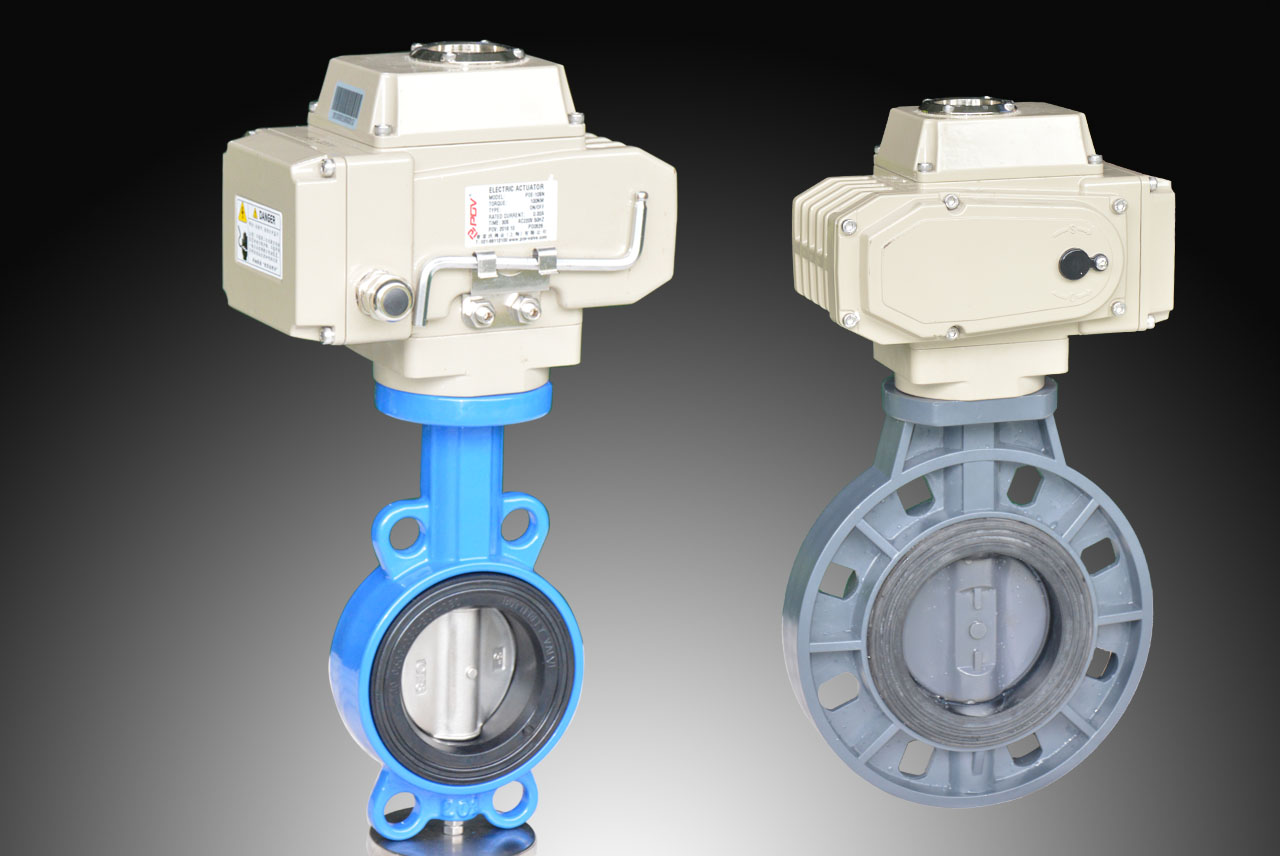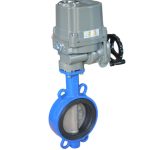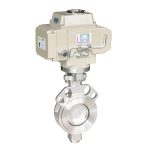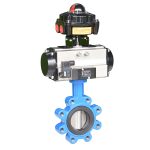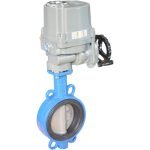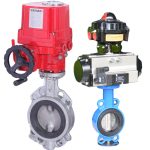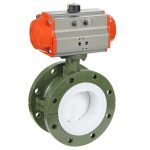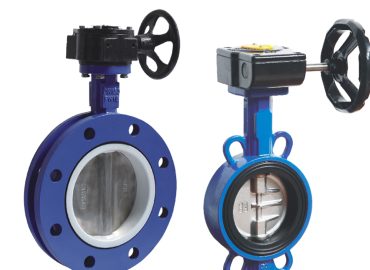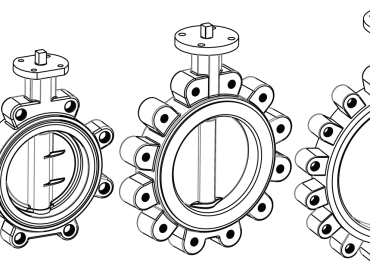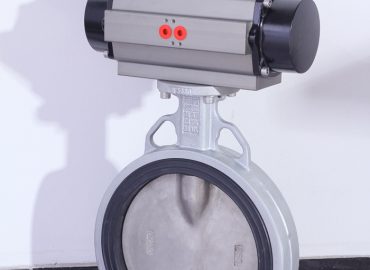Valves play a crucial role in regulating the flow of liquids and gases in industrial settings. Selecting the right type of valve is essential to ensure maximum efficiency and performance while minimizing costs and downtime. Among the different types of valves available, electric actuated butterfly valves have become increasingly popular due to their reliability, durability, and ease of automation. In this blog post, we will compare the features of electric actuated butterfly valves to other kinds of valves, including globe valves, ball valves, and gate valves. We will also highlight the advantages and disadvantages of each valve type to help you make an informed decision when selecting the right valve for your industrial applications.
Introduction
Electric butterfly valve offer several advantages over other kinds of valves such as globe valves, ball valves, and gate valves. Unlike globe valves, which are generally more expensive and have a higher maintenance cost, electric actuated butterfly valves are more cost-effective and require less maintenance. In comparison to ball valves, which tend to have longer operating times, electric actuated butterfly valves have a faster operating time and can be used in a wider range of environments. Additionally, compared to gate valves, which are not ideal for regulating flow, electric actuated butterfly valves are specifically designed to regulate the flow of liquids and gases in pipelines efficiently. Overall, electric actuated butterfly valves offer a balance of cost-effectiveness, durability, and automation, making them a popular choice in industrial applications that require precise and efficient flow control.
Definition of Electric Actuated Butterfly Valve
An actuated butterfly valve is a type of valve that utilizes an electric motor to open, close, and control the flow of liquids and gases in pipelines. The valve contains a metal disc, also known as a butterfly, which rotates around its axis to regulate the amount of flow. The valve is equipped with an electric actuator that controls the motion of the butterfly disc. The actuator can operate the disc either automatically or remotely, allowing for precise control of the flow even in challenging industrial environments. Electric actuated butterfly valves are designed to be low maintenance, reliable, and can be programmed to perform specific functions. They are commonly used in various industries, including chemical, pharmaceutical, and food processing, where precise flow control is critical to ensure safe and efficient operations.
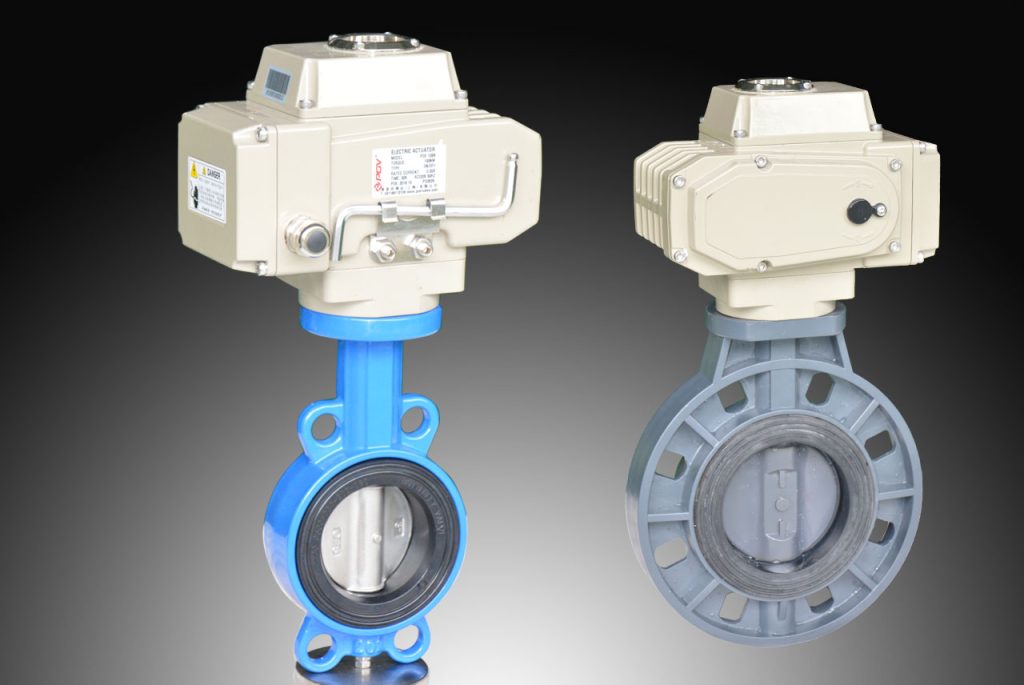
Comparison with other kinds of valves
Compared to other types of valves, motorized butterfly valve are known for their cost-effectiveness, reliability, and efficiency. Globe valves are more expensive and require a higher level of maintenance, making them more suitable for applications that require high-pressure or high-temperature conditions. Ball valves also tend to have longer operating times, and their full bore design makes them unsuitable for applications with high solids content. On the other hand, electric actuated butterfly valves are relatively inexpensive and require minimal maintenance, making them suitable for general purpose applications. Additionally, their design allows them to be installed in tight spaces where other valve types may not fit. Compared to gate valves, which can only be fully open or fully closed, butterfly valves allow for precise flow control and are more energy-efficient. Overall, electric actuated butterfly valves are a versatile, reliable, and cost-effective valve solution suitable for a wide range of industrial applications.
Electric Actuated Butterfly Valve Design
Electric Actuated Butterfly Valve design is relatively simple yet highly effective. The valve consists of a circular or disc-shaped butterfly that rotates around its axis to regulate the flow of liquids and gases in pipelines. The butterfly is mounted on the stem, which is connected to an electric actuator that controls its motion. Electric actuated butterfly valves come in different sizes and materials, depending on the specific application requirements. The valves are typically made of stainless steel, carbon steel, or plastic materials such as PVC, CPVC or PP. The design enables the electric actuator to control the butterfly disc easily, allowing for precise control of flow rates. The valve is also designed to be low maintenance, requiring little to no lubrication due to its simple design. The electric actuator can be equipped with various accessories such as fail-safe systems, position monitoring sensors, and modulating control devices that allow for even greater control and automation of the valve. Overall, the design of electric actuated butterfly valves is reliable, low maintenance, and efficient, making them ideal for a wide range of industrial applications.
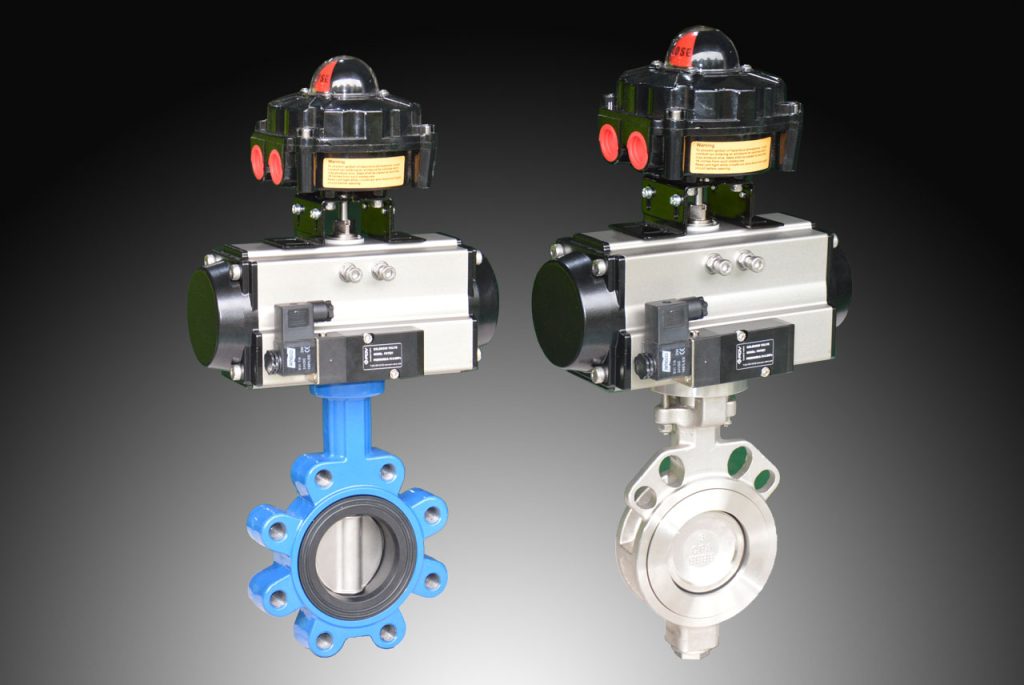
Components of an Electric Actuated Butterfly Valve
The components of an electric actuated butterfly valve are relatively straightforward, consisting primarily of the butterfly disc, stem, electric actuator, and other basic parts that make up the valve body. The butterfly disc is the component that controls the flow of liquids or gases in the pipeline. It is mounted on the stem, which extends into the valve body and is connected to the electric actuator. The electric actuator is the component that controls the motion of the butterfly and can be controlled remotely or automatically through an electrical signal. Other components of the valve may include gaskets to ensure a tight seal between the valve body and pipeline, flanges for easy installation and removal of the valve, and accessories such as position sensors or modulating control devices. Overall, the components of an electric actuated butterfly valve are designed to work together seamlessly, providing reliable, low maintenance, and efficient flow control in industrial applications.
Operation of an Electric Actuated Butterfly Valve
Operation of an automatic butterfly valve is relatively simple and efficient. The electric actuator controls the motion of the butterfly disc, which rotates around its axis to regulate the flow of liquids or gases in the pipeline. The valve can be controlled remotely or automatically by a control system that sends an electrical signal to the electric actuator. When the electric actuator receives the signal, it rotates the stem and butterfly disc to the desired position, allowing for precise control and automation of the flow. In the event of a power failure or loss of signal, the valve can be equipped with a fail-safe system that automatically closes the butterfly disc to prevent leaks or other potential hazards. The operation of an electric actuated butterfly valve is reliable, efficient, and allows for precise control of flow rates, making it an ideal valve solution for a wide range of industrial applications.
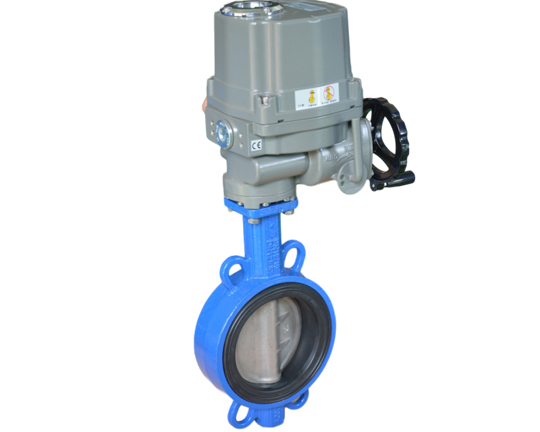
Comparison with Other Valves
Compared to other valves, electric actuated butterfly valves have several distinct advantages. For instance, compared to globe valves, butterfly valves are more cost-effective and require less maintenance. Globe valves are often more expensive and require more maintenance due to their complex construction, making them more suitable for applications that require high-pressure or high-temperature conditions. In comparison to ball valves, which tend to have longer operating times, electric actuated butterfly valves have faster operating times and are ideal for applications with high flow rates. Additionally, butterfly valves can be used in a wider range of environments than ball valves due to their design, which allows them to regulate the flow of liquids or gases in pipelines efficiently, even in pipes with curves or tight spaces. Furthermore, compared to gate valves, which can only be fully open or fully closed, electric actuated butterfly valves allow for more precise control and can be used for throttling applications. Butterfly valves are also significantly more energy-efficient than gate valves, making them a more cost-effective solution in many applications. Overall, electric actuated butterfly valves are versatile, reliable, and cost-effective valve solutions suitable for a wide range of industrial applications.
Ball Valve
A ball valve is a type of valve that uses a ball-shaped disc to regulate the flow of liquids or gases in pipelines. The valve is designed with a hollowed-out ball that can rotate around its axis when the valve is opened or closed. When the valve is open, the ball rotates to allow for full flow, and when it’s closed, the ball will then stop the flow completely. Ball valves come in different materials, including brass, stainless steel, PVC, and plastic, and they are often used in applications with a high flow rate or high pressure. Ball valve designs range from two-way to multi-port valves, and they can be actuated manually or through an electric, hydraulic, or pneumatic actuator. One of the advantages of ball valves over other types of valves is their quick operation, and ball valves are often found in various applications such as fuel and air systems, water treatment, and industrial processes that require precise flow control.
Globe Valve
A globe valve is a type of valve that uses a disc to regulate the flow of liquids or gases in pipelines. Unlike ball valves, which use a ball-shaped disc, globe valves have a pointed disc that moves up and down in the valve body to control the flow rate. Globe valves are typically used in applications requiring precise flow control due to their excellent regulating capabilities. They are used in the oil and gas industry, steam applications, and other industrial processes. Globe valves are available in different materials, including stainless steel, brass, and plastic, and they are often actuated by an electric, hydraulic, or pneumatic valve actuator. One of the primary advantages of globe valves is their ability to reduce the overall flow pressure in a system due to their unique globe-shaped design. This makes them ideal for control valves in steam and cooling systems where the flow must be precisely regulated. Although globe valves are generally more expensive and require more maintenance than other valve types, their ability to regulate flow and reduce pressure makes them a valuable valve solution for many industries.
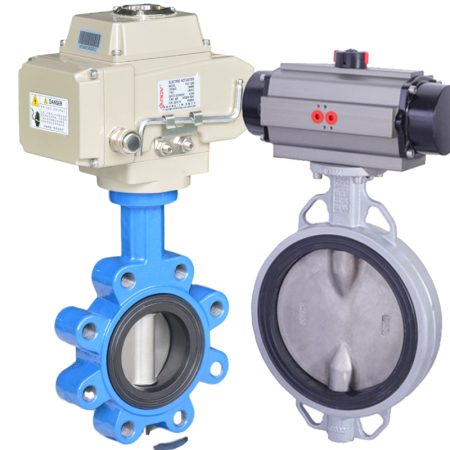
Gate Valve
A gate valve is a type of valve that uses a gate-shaped disc to regulate the flow of liquids or gases in pipelines. The gate, which can be raised and lowered within the valve body, moves up and down to control the opening and closing of the valve. Gate valves are often used in applications such as waterworks, oil production, wastewater treatment plants, and industrial process plants since they provide superior blocking efficiency due to their unique design. Gate valves come in different materials including brass, stainless steel, cast iron, PVC, and plastic; however, stainless steel is most commonly used because it offers superior strength and corrosion resistance. Additionally, gate valves are typically actuated manually or through an electric or hydraulic actuator depending upon the application requirements. Gate valves offer excellent shutoff capabilities due to their tight sealing capabilities when closed; however, they are not suited for throttling or regulating flow rate like other types of valves like globe or ball valves.
Advantages of Electric Actuated Butterfly Valves
Electric actuated butterfly valves are a type of valve that uses a butterfly-shaped disc to regulate the flow of liquids or gases in pipelines. These valves are becoming increasingly popular in industry due to their ability to provide robust and reliable performance, as well as their cost-effectiveness and ease of maintenance. In comparison with other types of control valves such as gate, ball, and globe valves, electric actuated butterfly valves require less space and can be opened more quickly. Moreover, since no manual actuation is required in order for the valve to open or close, electric actuated butterfly valves offer excellent flexibility when it comes to automated processes. Additionally, electric actuated butterfly valves offer superior strength and corrosion resistance due to the materials they are constructed with such as brass, stainless steel, cast iron and PVC. Furthermore, they provide improved sealing capabilities when compared to manual operators; this not only minimizes the risk of leaks but can help reduce energy costs by reducing pressure losses through pipelines. Finally, electric actuated butterfly valves are virtually silent in operation which makes them ideal for applications involving sonicsensors or other sound-sensitive equipment.
Cost-Effective
Cost-effectiveness is a term to describe the ability of an investment or product to provide the best value for money. This can be measured based on the cost of producing a given product or service as compared to its return or usefulness. Cost-effectiveness is particularly important for companies looking to maximize returns on their investments, since it allows them to identify which investments are most likely to result in positive returns and minimize losses. Cost-effectiveness also plays an important role in social policy, where governments must determine the most effective way to allocate resources such as education, health care and infrastructure. In addition, cost-effectiveness is becoming increasingly important within the context of sustainability, where organizations must strive to achieve maximum efficiency with minimal waste. By implementing cost-effective measures, businesses can achieve significant reductions in energy consumption and other resource costs while still achieving their desired results.
Easy to Install and Maintain
Easy to install and maintain products are becoming increasingly popular due to their convenience and cost-efficiency. These products can often be installed with minimal tools and expertise, which reduces the need for expensive installation services. In addition, these products often come with clear instructions, making them easy for even first-time users to get up and running quickly. Furthermore, many easy to install and maintain products are designed with components that do not require regular servicing or maintenance, such as sealed motors or frictionless bearings, which helps reduce operational costs over time. Finally, these products can have a long lifespan if they are cared for properly, resulting in further savings in terms of replacement costs. All of these factors combine to make easy to install and maintain products an economical option for businesses looking to save money while still achieving desired results.
Efficient
Efficiency is a measure of how well a system, process or product produces desired outputs with minimal waste. Efficient systems are designed to maximize the use of resources while producing the desired outcome, which often results in cost savings and increased productivity. For example, an efficient manufacturing process can reduce energy usage and waste while improving output quality. Similarly, an efficient supply chain can reduce delivery times and help keep inventory levels low. Furthermore, by creating more efficient systems companies can often save on labor costs as processes become increasingly automated. Finally, creating efficient systems also helps to reduce environmental impact, which is becoming increasingly important in today’s world. Overall, efficiency is key for any business looking to maximize profits and remain competitive in a changing market.
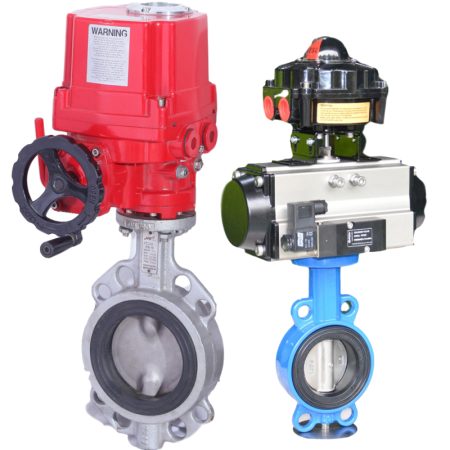
Conclusion
Electric actuated butterfly valves are an efficient and cost-effective solution for a variety of applications. They are easy to install, require minimal maintenance and can be used in tight spaces with limited space requirements. Compared to other types of valves, electric actuated butterfly valves offer superior pressure control, much lower operating costs and greater longevity. Additionally, they provide precise control over the flow rate, allowing for more consistent performance. For these reasons and more, electric actuated butterfly valves are quickly becoming the go-to choice for many industrial applications. With their combination of features and benefits, these versatile valves ensure that you can get the job done reliably and cost-effectively.
Summary of Comparison
A comparison between various types of valves can help you determine the best option for your application. Electric actuated butterfly valves offer superior pressure control and lower operating costs compared to other types of valves, as well as greater longevity and precise flow rate control. Additionally, they are easy to install and require minimal maintenance, making them an ideal choice for many industrial applications. By choosing electric actuated butterfly valves, you can ensure a reliable, efficient and cost-effective solution that will meet your needs now and in the future.
Best Applications for Electric Actuated Butterfly Valves
Automated butterfly valve are an ideal choice for a variety of applications. They can be used in industrial settings, such as food and beverage production, chemical processing, automotive manufacturing and more. Additionally, they are suitable for medium to high temperature applications, making them a great option for controlling steam or hot water systems. Furthermore, electric actuated butterfly valves can also be utilized in medical facilities and other low-pressure systems due to their precise flow control capabilities. With their versatile design and reliable performance, electric actuated butterfly valves are sure to meet the needs of any application.


